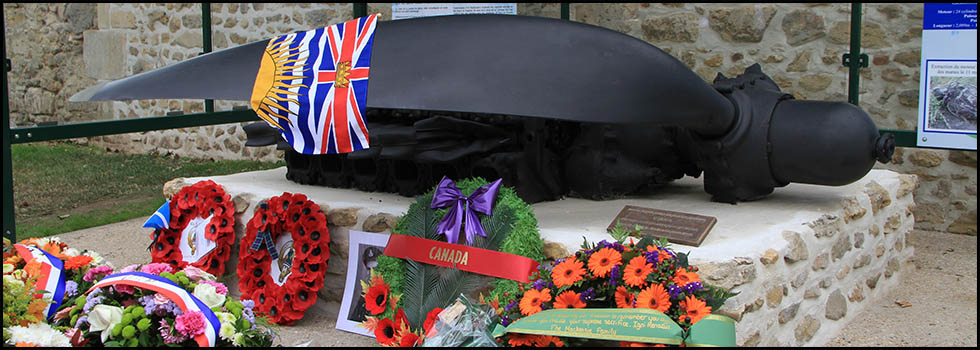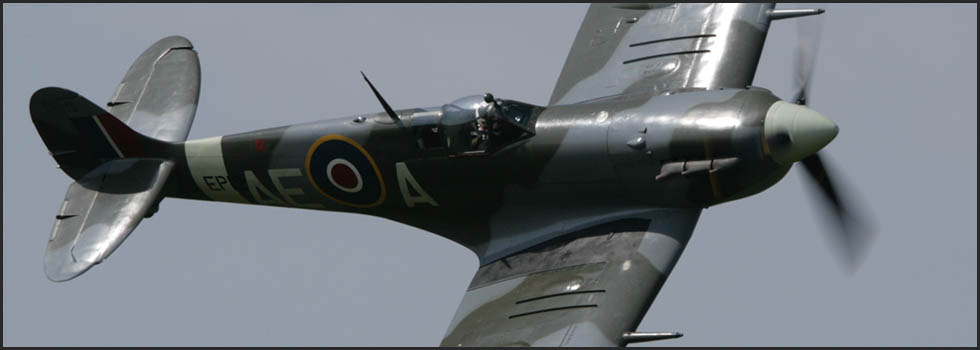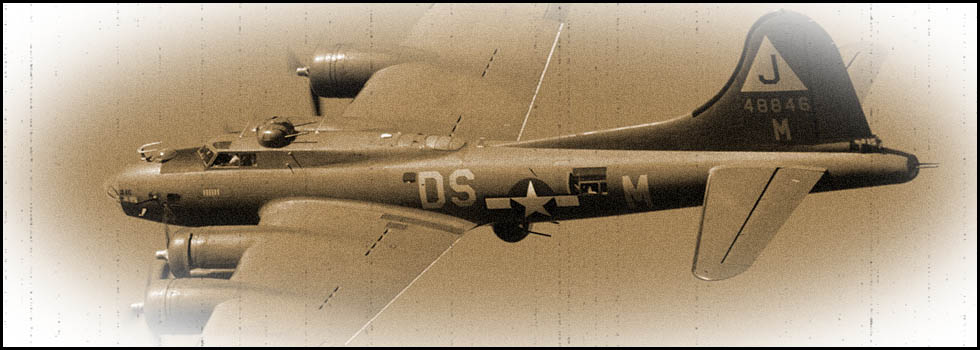11th February 1944
Boeing B-17G # 42-31388
306th Bomb Group
423rd Bomb Squadron
8th Air Force
Campremy (Oise)
Copyright © 2017 - Association des Sauveteurs d'Aviateurs Alliés- All rights reserved -
En français ![]()
On the morning of 11th February 1944, 223 B-17 "Flying Fortresses" of the 8th Air Force took off from various bases scattered throughout England for a new mission of strategic bombing on industrial sites and communication located in the heart of Germany. The priority targets defined by the High Command were the cities of Ludwigshafen, Frankfurt am Main and Saarbrucken. Already bombed on 29th January and 8th February, Frankfurt was particularly targeted. This city was about to undergo a devastating 3rd raid in just two weeks.
Twenty heavy bombers from the 306th Bomb Group, based in Thurleigh, Bedfordshire, took part in the mission. Among these aircraft: the B-17 # 42-31388 and its experienced crew. At the controls, 1st Lt. Geno Di Betta was flying his 16th mission on that day.
The crew of the B-17G # 42-31388 :
|
1st Lt. Geno Di BETTA |
Pilot |
22 |
Evaded |
Parkersburg, West Virginia |
|
2nd Lt. Earl J. WOLF Jr |
Copilot |
22 |
Evaded |
Princeton, Illinois |
|
1st Lt. Raymond F. FEILBACH |
Navigator |
27 |
POW |
Monroe, Louisiana |
|
1st Lt. Jerroll E. SANDERS |
Bombardier |
22 |
POW |
Highlands, Texas |
|
T/Sgt. Fortunato V. CHICCARELLI |
Top turret gunner |
19 |
POW |
Boston, Massachusetts |
|
T/Sgt. Clyde E. HEWITT Jr |
Radio-operator |
22 |
Evaded |
Gary, Indiana |
|
S/Sgt. James H. COLEMAN |
Ball turret gunner |
27 |
MIA |
Indianapolis, Indiana |
|
S/Sgt. Guy H. GOLDEN Jr |
Right waist gunner |
22 |
Evaded |
Pine Bluff, Arkansas |
|
S/Sgt. Leonard F. BERGERON |
Left waist gunner |
24 |
Evaded |
Hartford, Connecticut |
|
S/Sgt. Eldo C. WESELOH |
Tail gunner |
21 |
Evaded |
Los Angeles, California |

Front row: 1st Lt. Di Betta is on the left. 2nd Lt. Earl J. Wolf is the 3rd from the left.
Back row : S/Sgt. Bergeron is second from the right.
After assembling in formation the aircraft crossed the Channel. At 10:20 am, the coast was crossed between Dunkirk and Ostend. The huge armada, protected by numerous escort fighters, headed east towards Germany. Over Mannheim, the German anti-aircraft artillery opened fire. Despite the 88 mm shells bursting around the aircraft, the attacking force divided. One part headed to Frankfurt while the other, which included the B-17 of 1st Lt. Di Betta, turned towards Saarbrucken. Clouds covered the targets and did not allow the 306th Bomb Group's leading aircraft to bomb. In the confusion, around 12:45, the bombs were dropped without the target being clearly identified.
Then the Flying Fortress piloted by 1st Lt. Di Betta was hit by Flak which damaged the wings and the tail. The perforated tanks leaked fuel. The aircraft could not keep up with the rest of the formation. It got further and further behind and tried to return to England despite its damage. Now isolated and gradually losing altitude, it managed to fly over France but soon suffered several attacks from a German fighter. S/Sgt. James H. Coleman was killed at his position, in the literally pulverized ball turret. Above Oise the pilot ordered the evacuation of the aircraft. One by one the members of the crew harnessed their parachute and threw themselves into the void. It was about 2:00 pm.
Lost, the B-17 # 42-31388 continued its flight for some time before crashing on the territory of the commune of Campremy (Oise).
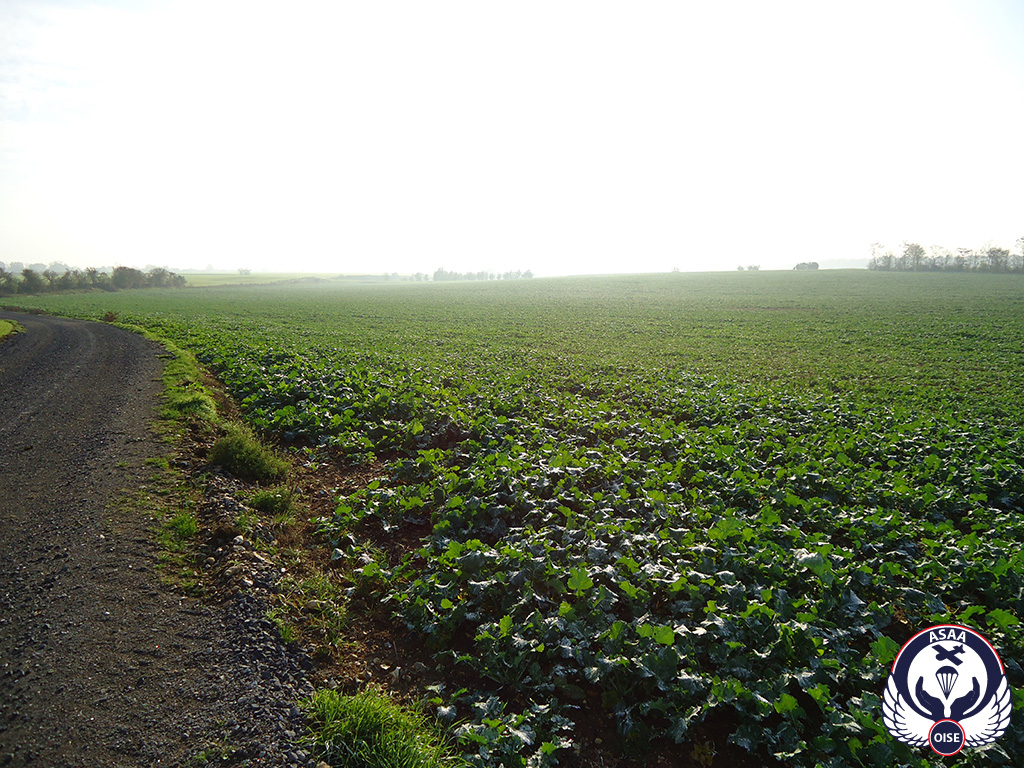
The crash site
1st Lts. Sanders and Feilbach landed by parachute near the village of Bulles but were quickly captured by the Germans.
T/Sgt. Chiccarelli also landed in the area of Bulles. He was wounded in the arm. On the ground, he was lucky to be quickly rescued by French patriots who lodged him for a day or two. A doctor came to take care of his arm but faced with the extent of the wound, he had no choice but to direct him to the hospital in Creil. The Germans subsequently discovered his true identity and T/Sgt. Chiccarelli was taken prisoner.
T/Sgt. Hewitt and the S/Sgts. Golden and Bergeron evacuated the aircraft almost together. All three landed safely in the vicinity of the farm in the hamlet of Wariville, near the village of Litz (Oise). They regrouped before the arrival of several Frenchmen who came to meet them. Their parachutes and their flight equipment were quickly hidden and then the three airmen were hidden in a haystack to escape the German search.
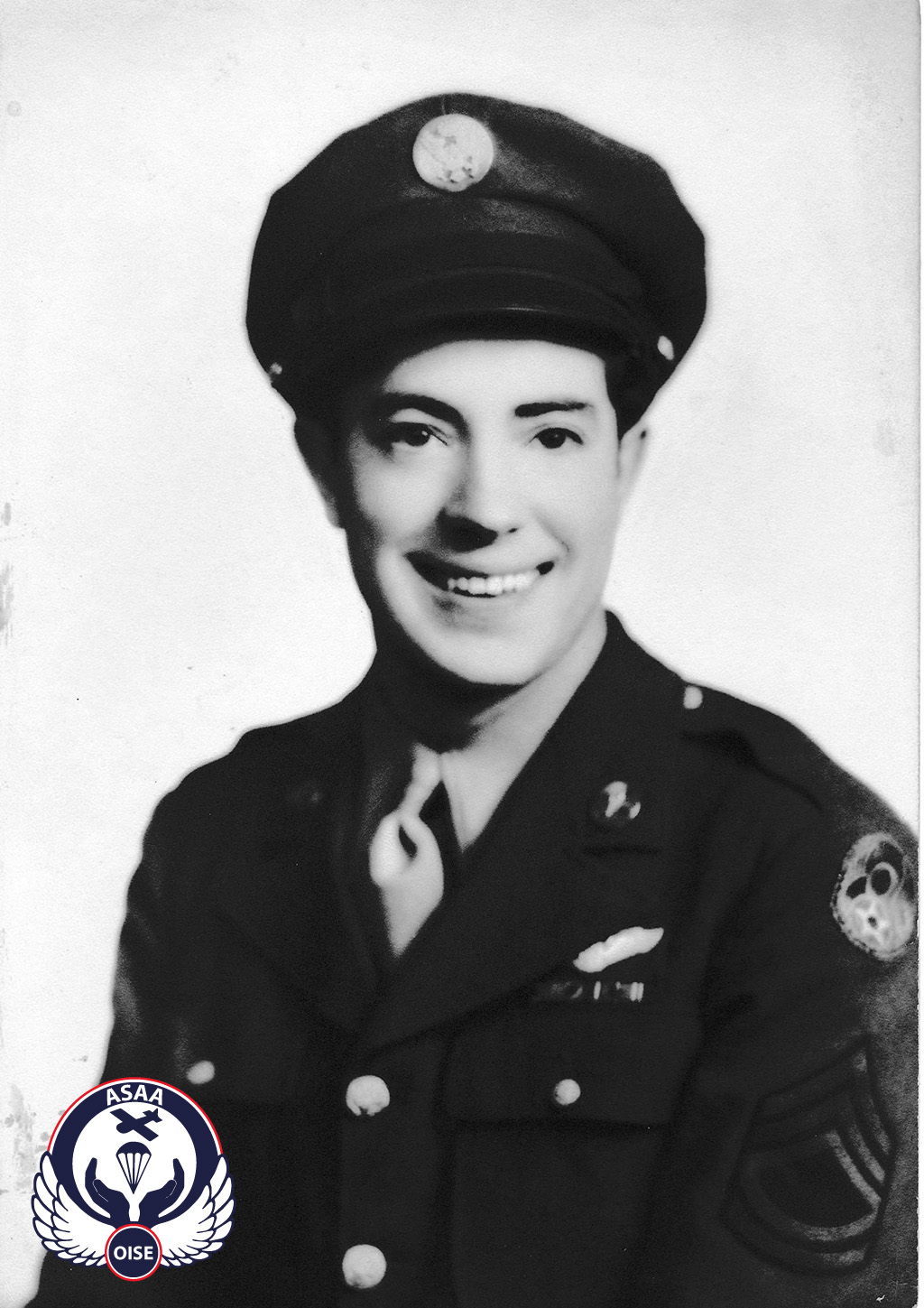
S/Sgt. Leonard F. Bergeron
Pierre Pouly witnessed the fall of the three airmen. He was working as a thresher at the Wariville farm. Towards the end of the day, he took Bergeron, Golden and Hewitt, mixed among his workmen, on board a trailer pulled by his tractor. They were brought without hindrance to the house of Pierre Pouly, who lived in the hamlet of Gicourt, near Agnetz.


Nowadays is a restaurant.
Dr. Roger Bouchard, of Clermont, a longtime friend of Pierre Pouly, was advised of the presence of the three Americans. He went to Gicourt, accompanied by Gaston Legrand, to take charge of the airmen. By a roundabout way, thus avoiding the national road where many German soldiers were, he transported Bergeron, Golden and Hewitt aboard his car and dropped them off at Clermont, at Odette Sauvage's.
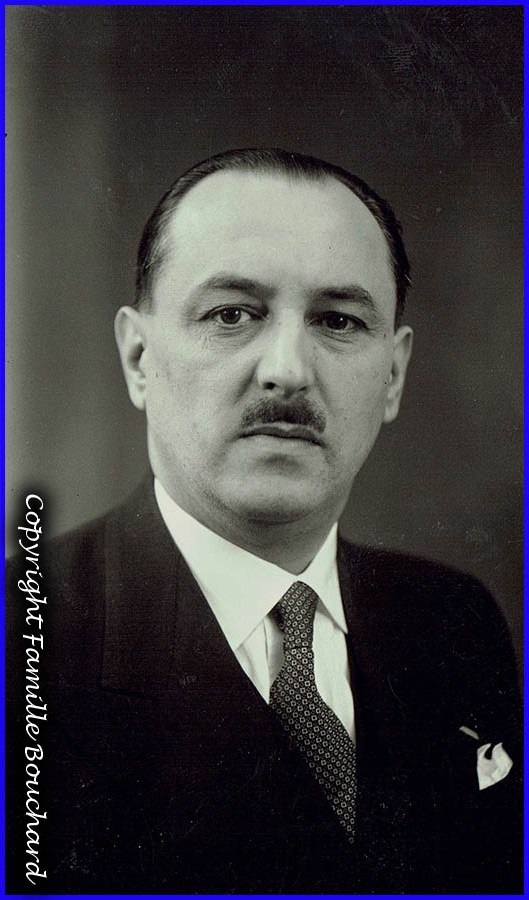

Two South African soldiers, Donald Retief and David Abrahams, escaped from Beauvais prison, were also accommodated at the Legrand-Sauvage. Once again, this family showed incredible audacity. The risk was great because the Kommandantur was nearby. The Germans went up and down the street regularly without ever suspecting the presence of airmen in this house in the Rue du Châtellier. Gaston, Odette and her son Edmond, aged 17, accepted all the sacrifices to feed and clothe their protégés, helped by the Leclercq family of Breuil-le-Sec, whom the airmen met during their stay.
The five men stayed with the Legrand-Sauvage for about a week before continuing their escape.
2nd Lt. Earl J. Wolf landed in the middle of a field near the village of Wavignies. Immediately, a large number of Frenchmen rushed to him but suspected him of being a German airman because of his short hair cut. Wolf then showed them a mark on his parachute bearing the inscription "USA" and declared that he was an American. Quickly getting rid of his parachute, he was taken to a neighbouring house. Using the "Phrase Book" of his escape kit, he made people understand that he needed civilian clothes. Soon one of the Frenchmen brought him some civilian clothes while he was distributing American cigarettes. Advised, Dr. Edmond Caillard, who spoke English, went to meet him, hid him in his car under a pile of clothes and took him to his home, rue Valentin Haüy, in Saint Just-en-Chaussee. At his home, Wolf met a compatriot, 2nd Lt. Lorenzi, another pilot of a Boeing B-17, who was injured. A little later a woman took Wolf to a local cafe where he met his own pilot, 1st Lt. Di Betta.
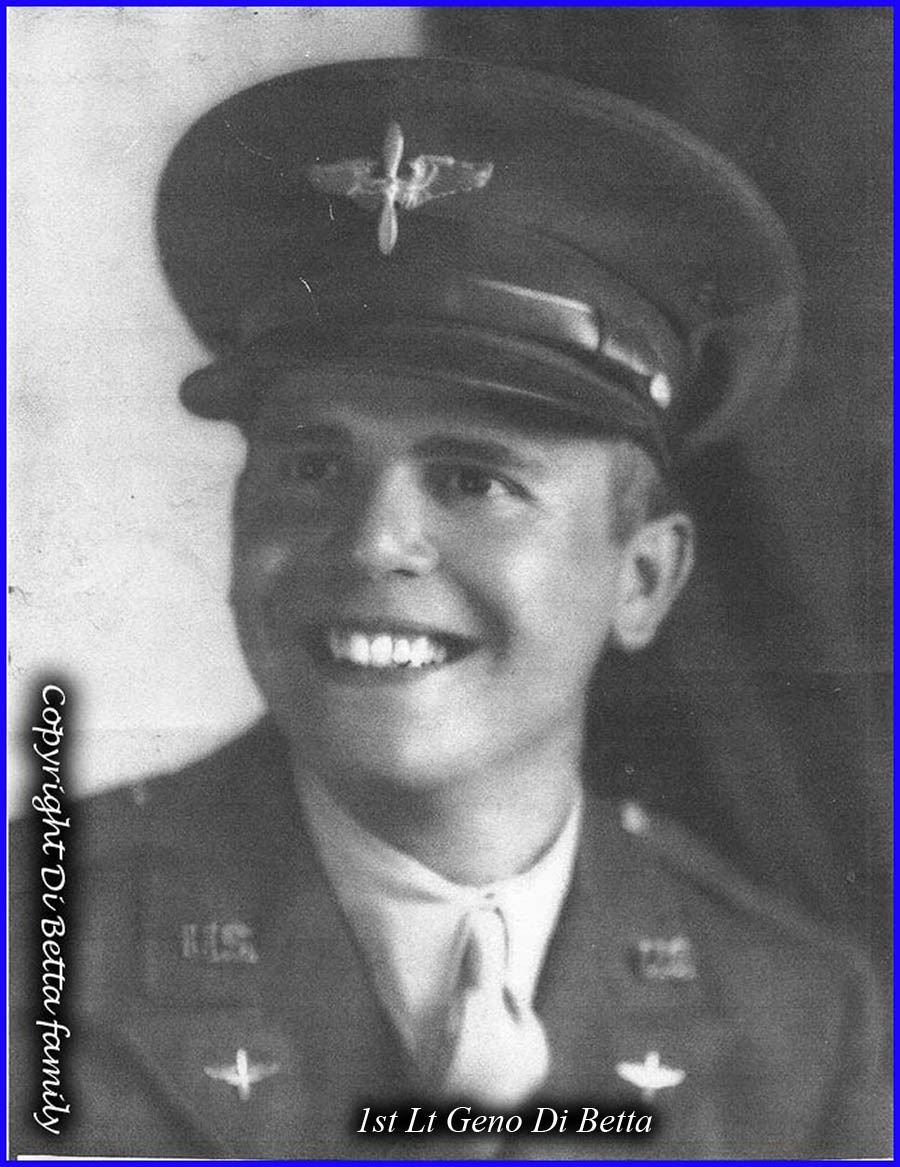 1st Lt. Di Betta had landed near the village of Catillon, wounded slightly in one hand. An escaped Russian worker who was in the fields immediately came to his aid while other people ran up and looked after burying his parachute and his flight equipment. Di Betta was quickly taken to a farm where he hid in a hen house. The Germans were already in the area in search of the airman who was now in a safe place. The farmer made him understand that he did know a doctor who spoke English. Soon Di Betta was taken to a cafe in Saint Just-en-Chaussee. He was confronted by Georges Jauneau, the local Resistance chief, a man of severe appearance who questioned him and asked for his maps and dog tags. Di Betta gave him only one. Upstairs, he found his co-pilot Wolf. On the evening of 11th February, both airmen were brought back to Dr. Caillard's, who then took them to Bulles, to Pierre Coulon's house, accompanied by 2nd Lt. Lorenzi.
1st Lt. Di Betta had landed near the village of Catillon, wounded slightly in one hand. An escaped Russian worker who was in the fields immediately came to his aid while other people ran up and looked after burying his parachute and his flight equipment. Di Betta was quickly taken to a farm where he hid in a hen house. The Germans were already in the area in search of the airman who was now in a safe place. The farmer made him understand that he did know a doctor who spoke English. Soon Di Betta was taken to a cafe in Saint Just-en-Chaussee. He was confronted by Georges Jauneau, the local Resistance chief, a man of severe appearance who questioned him and asked for his maps and dog tags. Di Betta gave him only one. Upstairs, he found his co-pilot Wolf. On the evening of 11th February, both airmen were brought back to Dr. Caillard's, who then took them to Bulles, to Pierre Coulon's house, accompanied by 2nd Lt. Lorenzi.
Aged 40, Pierre Coulon was a joiner who lived in the rue du Mesnil. With the complicity of his wife Albertine and his two daughters, Denise (15 years) and Colette (5 years), he served as a relay and lodged airmen disregarding all risks. In this house, the airmen found two other members of the crew of 2nd Lt Lorenzi: 2nd Lts. Robert Costello and Paul Packer.
Di Betta and Wolf stayed only one night at Pierre Coulon's house. On the evening of 12th February, around 6:00 pm, Pierre Coulon took them to the “Café du Bon Coin”, whose owner, Vanhoudeusden, was the leader of the local Resistance group.
Both airmen were hidden in the cellar. Informed by telephone that there were two "chickens" to recover, Dr. Gaston Redaud of Clermont immediately went to Bulles.
On his arrival, German soldiers were present in the cafe. Di Betta and Wolf, by a secret door and then through the garden, managed to get into the doctor's car and were taken to his home in the Rue d'Amiens in Clermont. Both airmen stayed there for about a week.
One morning, around 9:00 am, France-Raphaelle Fleury came to fetch the two "parcels" and escorted them on foot to her parents' home in the Rue de Mouy. The Fleury family had been involved, since the defeat of 1940, in the combat of shadows. Georges Fleury, France-Raphaelle’s father, was the head of the Centre-Oise sector of the OCM. For many months, clandestine meetings were held at his home to organize the fight against the occupier. Evaded airmen also frequently found refuge there.
After a week spent with the Legrand-Sauvage, the airmen were preparing to leave their hosts to join the Fleury family. Through the streets of the town, Odette took charge of Bergeron while Edmond accompanied Golden and Hewitt. At Georges Fleury’s house, the three airmen found their crew members : Di Betta, Wolf and Eldo Weseloh. The latter, previously conveyed from Saint Just-en-Chaussee to Bulles by Dr. Delignon, had been hosted by Berthe Descampeaux.

Georges Fleury at the Liberation
For all these airmen, it was time to leave Clermont. Arriving at the Fleury's in a truck, Edmond Bourge came to take charge of the airmen he was going to distribute, through various relays, in the area stretching from Creil to Chantilly.
Bergeron was dropped off at Creil, at Raymond and Suzanne Stubert's. Di Betta and Weseloh were taken to Louise Guisier at Vineuil-Saint-Firmin.Wolf, Hewitt and Golden, guided by Alfred Pernet, a gendarme of the Chantilly brigade, took the direction of Gouvieux and were lodged in the evening with the Lauro couple.
Bergeron was therefore the only one to be lodged with the Stubert. At the beginning of his stay, accompanied by Dr. Georges Debray, he met very discretely T/Sgt. Chiccarelli at the Creil hospital. He was able to visit him a second time, the day before Chiccarelli was transferred to the hospital in Beauvais. The wounded airman was "unmasked" a few days later by the Germans.
After two days with the Lauro family, Wolf was transferred to a butcher in Gouvieux, where he was housed above his shop. After a week, Edmond Bourge came to take him in charge and took him on a motorcycle to Raymond Stubert in Creil where he found Bergeron. Both airmen, now united, stayed there about three weeks.
Edmond Bourge was married to one of Mme Dorez's daughters who lived in Montataire. Sometimes, on Sunday, Wolf and Bergeron were invited to Edmond's parents-in-law for a meal, and there were two other American airmen who were hosted by the family: 2nd Lts. Lorenzi and Packer.

At the Dorez family’s house in Montataire.
During their stay with the Stubert, Wolf and Bergeron met Jacky du Pac, who interrogated them and informed them of the next stage of their evasion. Six other American airmen: Hennessy, Scanlon, Risch, Richardson Dicken and Schafer came to the Stubert’s. However, the rumour was circulating that the Stubert's home could be searched by the Gestapo. The airmen were divided amongst other families. Wolf and Bergeron were taken to the neighbouring village of Villers-Saint-Paul where they stayed at Charles Warren’s home, a designer residing in the rue des Marquets.
After the alert had passed, the two airmen were brought back to the Stubert's by Edmond Bourge.
16th March - The day had come to leave Creil.
Wolf, Bergeron, Richardson and Schafer were taken to the station where they met Lorenzi, Packer again and two other members of their crew, Costello and Sweeney.
Coming from Paris, Rene Loiseau and Genevieve de Poulpiquet, guides of the Shelburn network, were waiting for them at the Creil station. Edmond Bourge separated the airmen into two groups, pointing out their new guides. Bergeron, Wolf, Richardson and Schafer were taken in charge by Genevieve de Poulpiquet. The other four followed Rene Loiseau.
There were no problems on the train journey from Creil to Paris. After arriving at the Gare du Nord in Paris, around 6:30 pm, the two groups met at the entrance to a metro station. Schafer and Richardson were taken to the countess Bertranne d'Hespel, rue Maspero, in the 16th arrondissement, who lodged them for two nights. Rene Loiseau, accompanying the other six airmen, went to 5 rue Baudin in Levallois-Perret. The airmen were divided into two apartments on the fifth floor facing each other, belonging to two landlords of the network, Marguerite Di Giacomo and Yvonne Latrace.
After their arrival, the airmen were photographed and their fingerprints were taken.
On the morning of 17th March, the airmen were visited by Marcel Cola, who gave each of them a false identity card, a certificate of residence in the coastal zone and a metro ticket.

Leonard F. Bergeron‘s false identity card.
In the evening, Rene Loiseau took charge of the airmen and took them by metro to the Montparnasse station.
In the hall of the station they were discreetly in contact with Henri Bois, head of the guides for the Shelburn network. This man was waiting for them with railway tickets for their next night journey to Brittany. Two young English speaking guides accompanied them on the platform to a compartment of the train that had been booked. The departure to Brittany was planned around 10:30 pm.
18th March - After an uneventful journey, the train entered the station at Saint-Brieuc in the early morning. The airmen mingled with the other passengers on the platform. After crossing the checkpoints, they embarked on another train to continue their escape. Getting out at the station of Chatelaudren, they were guided to the farm of Jean-Marie Le Sommier, in the hamlet of Kerjagu, near Plouagat. Bergeron, Wolf, Lorenzi, Costello, Packer and Sweeney spent the rest of the day and the night of 18th/19th March in this isolated farmhouse.
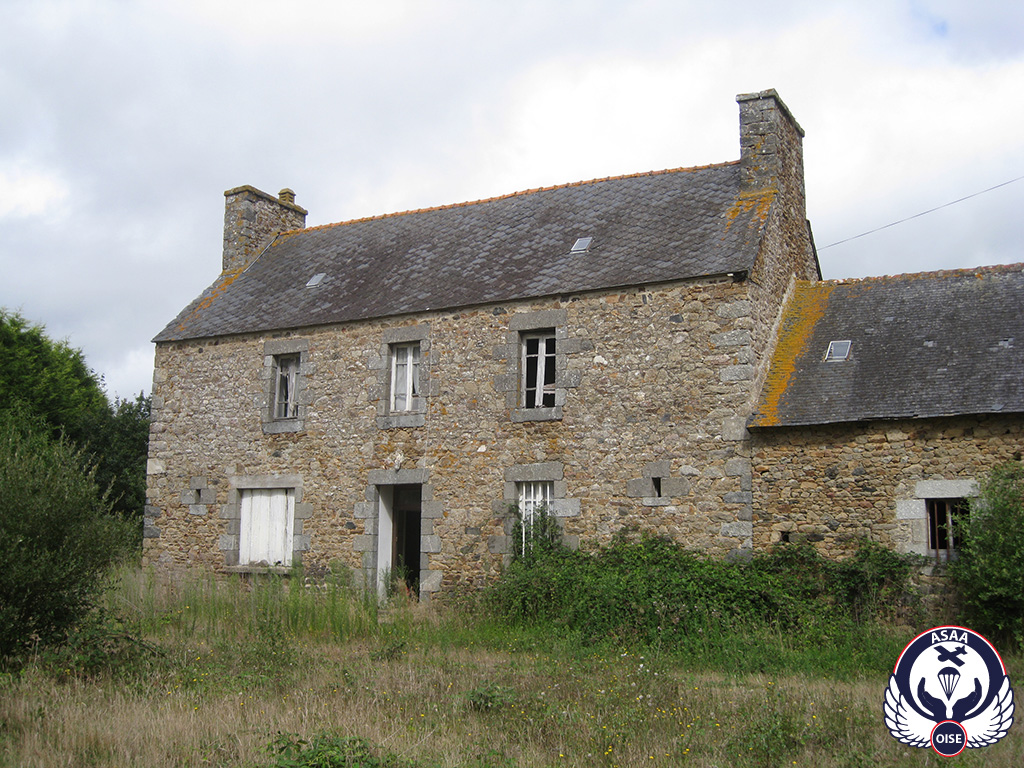
Plouagat – The Kerjagu farm
19th March - At the end of the morning, the six airmen were joined by six others (Schafer, Richardson, Dicken, Hennessy, Risch and Scanlon) who also arrived on the night train from Paris. All were now about to go to the coast.
Coming from Guingamp, the gas-powered truck, driven by the mechanic François Kerambrun, arrived at the farm of Kerjagu with four airmen (King, Johnson, Viola and McGlynn), a Hindu soldier from the Royal Indian Army Service Corps (Buland Khan) and two members of the Resistance Georges Le Droff and Roger Dehen). Bergeron, Wolf and their ten compatriots joined the others in the back of the vehicle, and then the tarpaulin was lowered. François Kerambrun then took the direction of the village of Plouha, about fifteen kilometers away, on secondary roads. On approaching Plouha, the truck stopped in a path. Marie-Therese Le Calvez and two young men who were waiting took charge of the evaded airmen in the night, dividing them into groups.
All the evaded airmen were then reunited at the Maison d'Alphonse, an unoccupied house belonging to the Gicquel family. This was the last step before reaching the place of embarkation to England, the anse Cochat beach.
This operation of embarkation, the fourth since January, was carried out without the presence of Dumais and Labrosse, the leaders of the network, who had returned to Paris. Francois Le Cornec, the leader of the local Resistance, led the operation. Towards midnight, at the Maison d’Alphonse, he addressed the evaded airmen with certain recommendations about security. Around 0:10 am, in total darkness, the airmen got together in groups in single file on a small path leading to the top of the cliff, supervised by Jean Trehiou, Pierre Huet, Job Mainguy, Marie-Therese Le Calvez and François Le Cornec. During the 30 to 40 minutes walk on the small paths, each one put his hand on the shoulder of the man in front.

The anse Cochat beach and the cliff from the open sea.
An enormous cliff fall allowed access to the beach. All the airmen and their guides descended the steep slope in the darkness. Nestled in the hollow of the rocks on the beach, they had to wait for the arrival of the boats.
At the appointed time, the MGB 503 of the Royal Navy, under the command of Lt. Robert Michael Marshall, went offshore and anchored near the Taurus Rock. Four boats were put into the sea in the utmost silence and rowed towards the beach, guided by optical signals emitted both by Job Mainguy posted halfway up the cliff and by Marie-Therese Le Calvez, one of the 17-year-old guides, posted below, who emitted a blue light signal. The alignment of the signals made it possible to guide the boats towards the beach.
It was 1:30 am. The boarding required about ten minutes. The four rowboats joined the corvette which then gradually moved away, at first at a slow speed, towards Dartmouth.
On that night of 19th to 20th March 1944, 16 American airmen, including Wolf and Bergeron, the Hindu soldier Buland Khan and two French resistants had got back to Freedom.
In Vineuil-Saint-Firmin, Di Betta and Weseloh were entrusted to Henri Lestienne where they stayed for six weeks. With false identity cards provided by the gendarmes of Chantilly, both airmen were then taken to Rene d'Halleine's house in Neuilly-en-Thelle, where they stayed for three weeks with other American airmen. Weseloh was then moved to Dr. Andrieu's home.
As for Hewitt and Golden after leaving Gouvieux, they were taken in by Pierre Auzi at Blaincourt-les-Precy before being temporarily separated.
Di Betta met up with Hewitt again in Bornel where they stayed with the Bokkelandt family. Taken in charge by the "Alsace" network, their escape led them to Le Mesnil-Theribus and the home of Mme Marie-Louise Bonnin before taking a train from Chaumont-en-Vexin to Pontoise and then to Argenteuil, escorted by Henri Maigret.
At Argenteuil, both airmen were successively lodged by Charles Biennais and then by Eliza Villeneuve, where they stayed for five weeks.
Di Betta and Hewitt were finally taken to the Bellande camp in the forest of Freteval (Loir-et-Cher).
Also through the "Alsace" escape network Weseloh stayed in Jouy-sous-Thelle at Georges Bosset. His journey led him to join, like Golden, the camp of Bellande where they met up with their companions Di Betta and Hewitt again. All the airmen awaited the imminent arrival of the liberating troops. All were then repatriated to England before reaching the United States.
May 2017 - The visit of the Bergeron family.
13 September 2025 - Ceremony in memory of the crew


